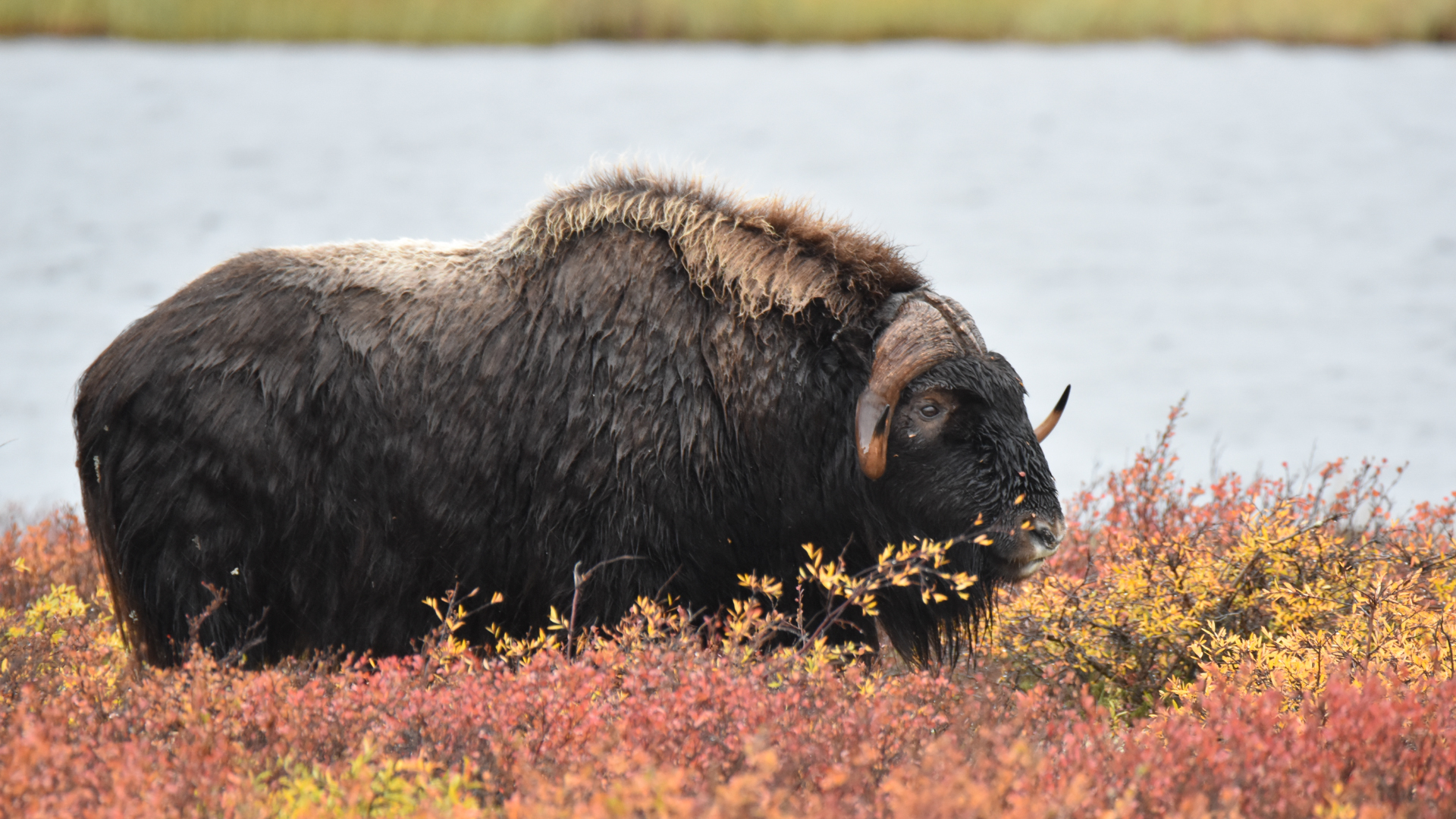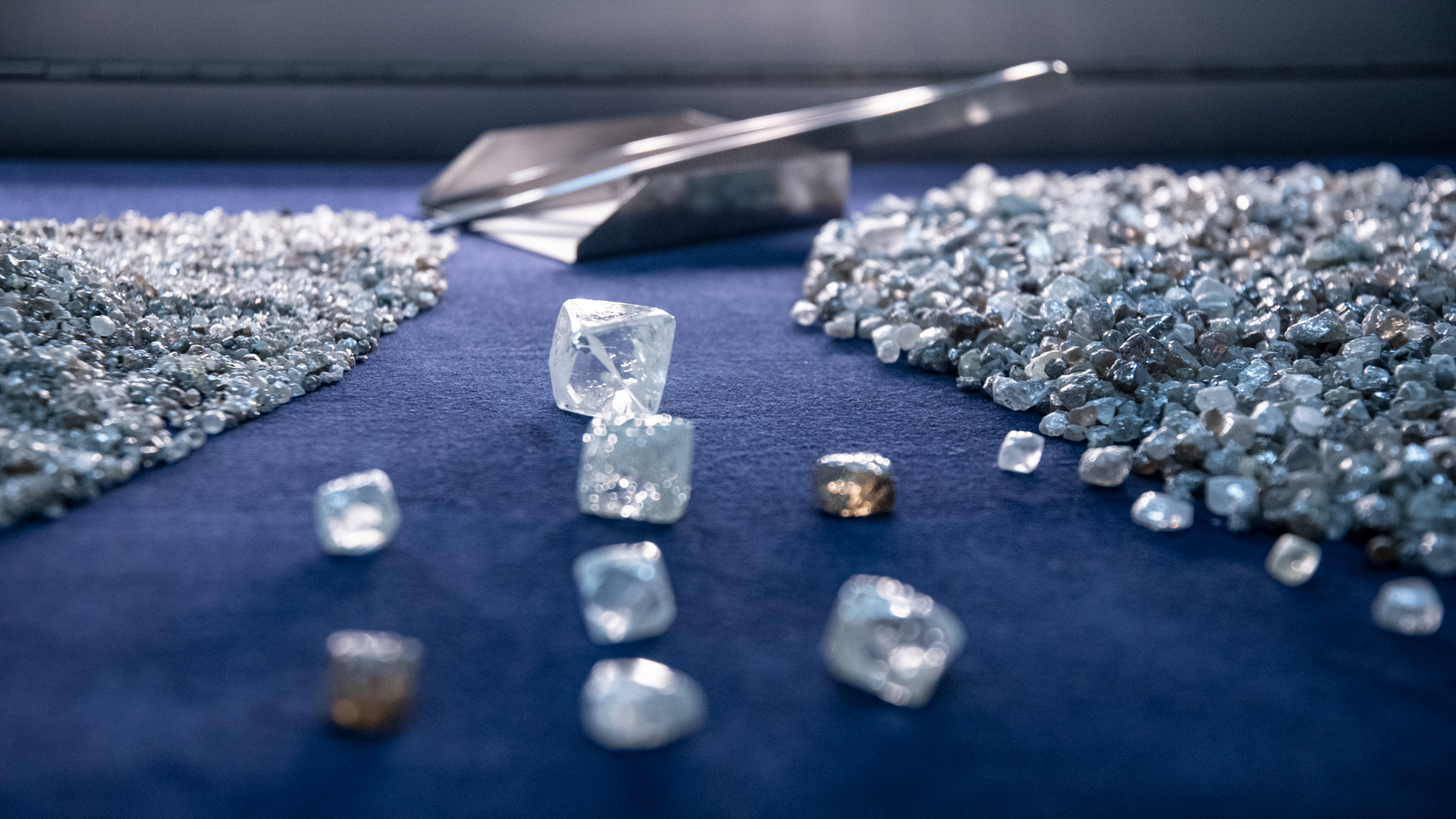Unearthing Prosperity: The Remarkable Tale of Canadian Diamonds

Winter landscape near the Gahcho Kué diamond mine. (Courtesy of De Beers Canada and Rio Tinto)
Jonas Sangris remembers the time before diamonds were discovered in Canada. He was the Chief of the Dene First Nation, an Indigenous group in Canada’s Northwest Territories. He tells me about the early 1990s, when metals mining was the prevalent industry. This would soon disappear, leaving a substantial economic void in the community. Jonas recalls approaching the community elders at that time and expressing concern for the impending economic issues, to which the elders calmly replied, “Don’t worry, something will come up.” A year later, diamonds were discovered. This discovery would transform the Northwest Territories of Canada.
“It was like the elders knew,” remembers Jonas. The economy of the Northwest Territories of Canada has grown over 80% since 1999, thanks, in large part, to diamond mining.
In a rare trip to this region, I learned how the community leaders in the Northwest Territories wanted to ensure the recovery of diamonds would benefit everyone. In mining that came before, a wide-reaching benefit to the community was rare, but they would make sure it happened moving forward. With mining companies, local and federal governments, and Indigenous groups working together, measures and agreements were implemented to guarantee this benefit to the people and the natural environment.

Many fear that any type of mining or industry can bring with it unwanted ecological issues, especially in ultra-remote areas like Canada‘s far north. However, in diamond recovery, mitigating these issues is a priority even before recovery begins.
Several methods partially offset the carbon footprint of the mine, including wind farms, carbon offset tax, and a recently announced solar farm at Rio Tinto’s Diavik mine. I saw firsthand how nature and wildlife are continuously monitored to ensure nothing is disturbed.
Incredibly, thanks to mine closure agreements, within a few years after a mine is closed, the landscape is returned to its original condition as if it were never there. This process was well underway at the Snap Lake diamond mine in the Northwest Territories and will be completed by 2024.

One reason Canada’s diamond mines have been so successful in mitigating environmental impact is an eco-partnership once thought impossible, between Indigenous knowledge and modern science. One such organization, the Ni Hadi Xa, comprising six Indigenous Nations, is responsible for monitoring the impact of the Gahcho Kue diamond mine, owned by De Beers and Mountain Province Diamonds. Working hand in hand with the mining companies, their goal, according to their mission statement, is “to ensure that the mine’s operation does not compromise the ability of the land to support those who rely on it.”
They utilize traditional wisdom alongside modern tools to monitor impact. Their work entails data collection on water quality, observing the mine’s activities using traditional knowledge gathering, and conducting technical reviews of the environmental management plans. With Canada’s NWT as a blueprint, a movement of ‘Indigenous Guardians’ like the Ni Hadi Xa can redefine conservation and set these areas up for success without compromising the environment.
Since 1996, diamond mines in the Northwest Territories of Canada have contributed over $26 billion to the economy. More than $18 billion from this amount has gone toward businesses in the Northwest Territories and over $8 billion to companies specifically owned by Indigenous people. Of the total economic contribution, only 30% left the Northwest Territories. Diamond mining is also the largest private sector industry in the whole of the Northwest Territories, contributing 28% of the total GDP in 2022.

The economic contribution is impressive, but what if the mine becomes depleted? Mineral-rich regions have dealt with this problem extensively, yet the natural diamond industry actively addresses it. The Canadian Government’s annual socioeconomic report demonstrates their approach: They hire locally, retain financial benefits within the community, and allocate funds to infrastructure, social programs, and education. Substantial investments throughout the mine’s operation led to an economy that extends well beyond the mine’s closure.
By purchasing goods and services from local residents, benefits flow into countless other local industries. In 2022 alone, over $754 million flowed through NWT business from the mines’ local procurement of goods and services. In turn, the additional income of residents and local companies boosts the local retail economy, which then stimulates other parts of the economy and fosters entrepreneurship. Diamond mining revenue is also shared with the provincial and federal governments through royalties and taxes. The royalty rate alone can be up to 13% in addition to corporate taxes, property taxes, fuel taxes, and a carbon tax based on the mines’ fuel consumption that helps offset their carbon footprint. The government then shares these royalties with the local Indigenous groups.

The mines also supply some of the rough diamonds discovered to local diamond cutters and polishers, which provides opportunities for residents to pursue employment and training in these fields. Tyrell Sangris, the grandson of Mr. Jonas Sangris, is a diamond-cutting apprentice in the Northwest Territories capital of Yellowknife. He shared how the discovery of diamonds expanded the opportunities for locals who may have otherwise needed to search for work elsewhere. “You can always tell who just started working in the diamond mines because they’ll be driving a new F-150,” he laughs.
Regardless of the NWT’s population of less than 45,000, mines prioritize hiring the local residents. The mines work with the Department of Education, Culture and Employment and organizations like the Mine Training Society, Skills Canada, and Aurora College to support the northern workforce. The training and education help the mines to be able to hire more locals but also prepare residents for jobs outside the mining industry, another way to sustain prosperity after the mines close.

After hearing from Melanie Sangris, unrelated to Jonas and Tyrell, I realized that Sangris must be a common surname in the NWT. Melanie was born and raised in Yellowknife and is a member of the Dene First Nation Indigenous group. She has advanced her career to become Rio Tinto’s Diavik diamond mine’s first female Tele-remote Scoop Operator. The path to her success was not always easy, “I was having a hard time navigating what to do once I was out of school,” she says. But she soon found her calling when a friend introduced her to the Mine Training Society, and they enrolled in training programs together. She discovered she was interested in the training courses and had a good understanding of the concepts of the mining cycle.
“Heavy equipment was new to me; I felt proud of myself that I was able to catch on quickly,” she recalls. “That encouraged me to learn all I can, practice and stick with it.” Among her achievements, she is most proud of purchasing her first home and being a mother who works at a diamond mine. The Diavik diamond mine continues to support her growth as an individual and employee, sponsoring her training in the Northern Leadership Development Program offered through Aurora College. The multiple training and education programs, apprenticeships, and scholarships from the diamond mining companies helped 1,338 students in the Northwest Territories receive financial assistance in 2022 alone.

Recovery of natural diamonds also supports dozens of community development projects beyond training and education. One of the many projects I learned about is the Baby Bundle program, funded by the Gahcho Kué diamond mine. The first years of a child’s life are pivotal to its development, so they have prioritized supporting early childhood initiatives across the NWT. The ‘Baby Bundle’ is an extensive care package given to every NWT family expecting a child. Stocked with everything from Vitamin D drops and digital ear thermometers to bibs and onesies, the Baby Bundle also includes a variety of resources for new parents. These resources include a safe environment guide, nutrition advice and tips for soothing a crying baby. This project is one of many examples of the support and care offered to the communities involved in diamond recovery.
Canada’s diamond industry is an example of what is possible when companies put people, communities and the environment ahead of profit. Everyone wins when the community is invested in success and companies are invested in the community.
*Data from the 2022 Government of the Northwest Territories Socio-economic Agreement report for mines operating in the NWT
